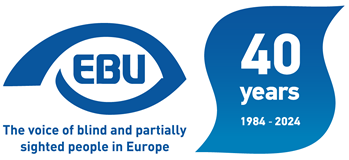Education systems
Equal access to national education, vocational training and lifelong learning systems
Educational settings - mainstream education
Education settings - special education
Collaboration between both systems
Teaching of compensatory skills made necessary by vision loss
Provision of accessible text books and other educational material
Provision of assistive technology
1. Equal access to:
1.1. National education system
Pupils with special educational needs are generally integrated into mainstream early childhood education and schooling, with provision for extra help in class where required. Approximately six per cent of pupils in compulsory education are recognised as having special educational needs.
Only 0.5 per cent attends special schools.
The National Support System for Special Education (Statped).
The general objective for Statped is to give guidance and support to those in charge of the education in municipalities and county administrations to ensure that children, young people and adults with major and special educational needs are secured well-advised educational and developmental provisions.Statped consists of 13 resource centres owned by the State, and 5 units for special education, owned by local authorities, county administrations, foundations or private organisations, where Statped buys services. These centres offer special educational guidance and support for local authorities and county administrations.
The Education Act of 17 July 1998 regulates education at primary, lower secondary and upper secondary level. A main principle is that teaching shall be adapted to the abilities and aptitudes of individual pupils. Pupils who do not, or are unable to benefit satisfactorily from ordinary tuition have a right to special education. The Education Act makes no distinction between different forms of special education.
The main model since 1975 is to provide special education integrated within mainstream education.
2. Educational settings
2.1. Mainstream education (please specify what support measures if any)
For blind and visually impaired children, separate special schools do not exist anymore. The two National Resource Centres in this sector assist in setting up adapted education in ordinary schools, produce teaching materials and give courses to pupils and teachers in their region.
2.1.1. Primary
2.1.2. Secondary
2.1.3. University
In higher education, there is no legal basis for the policy of equal right to education. However, according to the Act on Universities and University Colleges of 2000, higher education institutions should, where possible, provide facilities suitable for students with special needs. According to the Act, the higher education institutions are responsible for ensuring that the learning environment at the institution, including the physical and mental working environment, is fully satisfactory on the basis of an overall assessment of considerations regarding the health, safety and welfare of the students. The design of the physical working environment shall, as far as possible and reasonable, ensure that premises, access roads, sanitary facilities and technical installations are designed in such a way as to enable persons with disabilities to study at the institution.
The Act also states that “the institutions shall, to the extent possible and reasonable, adapt study provisions for students with special needs. This adaptation must not result in a reduction of the academic requirements of the individual courses.” In addition, higher education institutions assist students with special needs at examinations by: buying PCs, renting extra rooms, wages for secretaries and inspectors' extra hours at prolonged examinations.
2.1.4. Vocational training and lifelong learning
In adult education, there are considerable variations in the organisation of teaching adults with special needs. In one-third of municipalities the teaching is carried out in separate centres or departments, often in connection with social and medical institutions.
2.2. Special education
For blind and visually impaired children, separate special schools do not exist anymore.
2.2.1. Primary
2.2.2. Secondary
2.2.3. University
2.2.4. Vocational training and lifelong learning
2.3. Collaboration between both systems
2.3.1. Primary
2.3.2. Secondary
2.3.3. University
2.3.4. Vocational training and lifelong learning
3. Teaching of compensatory skills made necessary by vision loss
3.1. Subjects (Braille, computer, daily-living skills, mobility, etc.)
3.2. Training and certificates for visually impaired teachers (Braille, computer, daily-living skills, mobility, etc.)
Skådalen Resource Centre.
Target group: Teachers.
Skådalen Resource Centre is a centre for the deafblind, deaf and hard-of-hearing.
Address: Postboks 13 Slemdal, N-0710 OSLO
Email: skadalen@statped.no
3.3. Training and certificates for visually impaired students (Braille, computer, daily-living skills, mobility, etc.)
The pupil generally receives a certificate/diploma stating the content of the courses he/she has taken and teaching methods used. The teacher's assessment of the pupil's achievement and progress in skills and knowledge are stated in the certificate/diploma.
4. Provision of accessible text books and other educational material
Some special schools and National Resource Centres have Internet shops for educational tools offered as CD-ROM, video, DVD, in print or Braille.
4.1. Provision of the basic documents
4.2. Adaptation and transcription of the documents
5. Provision of assistive technology
ICT-assisted teaching is important for disabled children. Pupils receive systematic education in using ICT in school subjects. ICT based tools are important for the disabled in their communication with society.
5.1. Primary
5.2. Secondary
5.3. University
5.4. Vocational training and lifelong learning
(Sources http://www.icevi-europe.org/national/no.html
http://eacea.ec.europa.eu/education/eurydice/eurybase_en.php#norway

